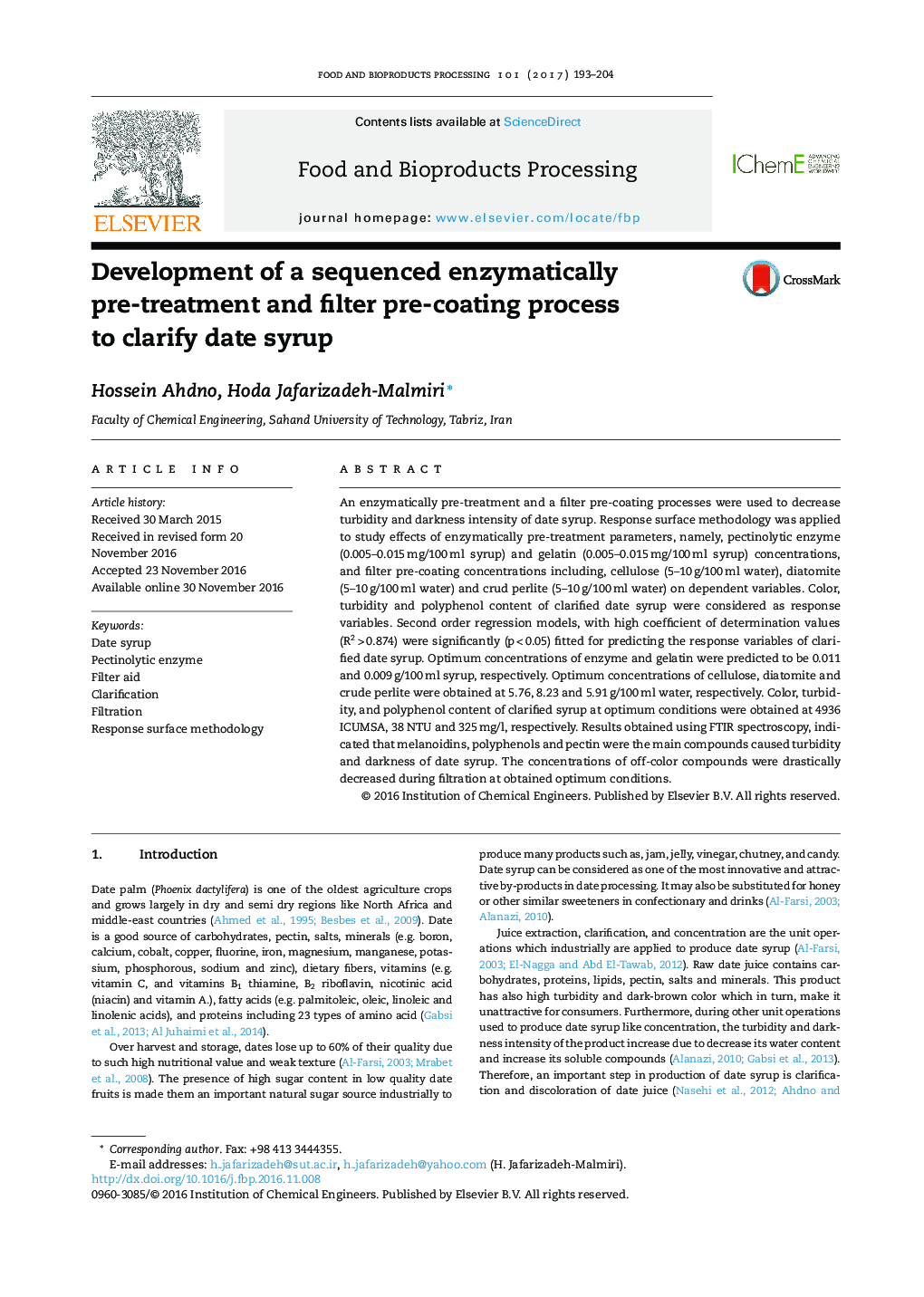| Article ID | Journal | Published Year | Pages | File Type |
|---|---|---|---|---|
| 4753054 | Food and Bioproducts Processing | 2017 | 12 Pages |
Abstract
An enzymatically pre-treatment and a filter pre-coating processes were used to decrease turbidity and darkness intensity of date syrup. Response surface methodology was applied to study effects of enzymatically pre-treatment parameters, namely, pectinolytic enzyme (0.005-0.015 mg/100 ml syrup) and gelatin (0.005-0.015 mg/100 ml syrup) concentrations, and filter pre-coating concentrations including, cellulose (5-10 g/100 ml water), diatomite (5-10 g/100 ml water) and crud perlite (5-10 g/100 ml water) on dependent variables. Color, turbidity and polyphenol content of clarified date syrup were considered as response variables. Second order regression models, with high coefficient of determination values (R2 > 0.874) were significantly (p < 0.05) fitted for predicting the response variables of clarified date syrup. Optimum concentrations of enzyme and gelatin were predicted to be 0.011 and 0.009 g/100 ml syrup, respectively. Optimum concentrations of cellulose, diatomite and crude perlite were obtained at 5.76, 8.23 and 5.91 g/100 ml water, respectively. Color, turbidity, and polyphenol content of clarified syrup at optimum conditions were obtained at 4936 ICUMSA, 38 NTU and 325 mg/l, respectively. Results obtained using FTIR spectroscopy, indicated that melanoidins, polyphenols and pectin were the main compounds caused turbidity and darkness of date syrup. The concentrations of off-color compounds were drastically decreased during filtration at obtained optimum conditions.
Related Topics
Physical Sciences and Engineering
Chemical Engineering
Bioengineering
Authors
Hossein Ahdno, Hoda Jafarizadeh-Malmiri,
